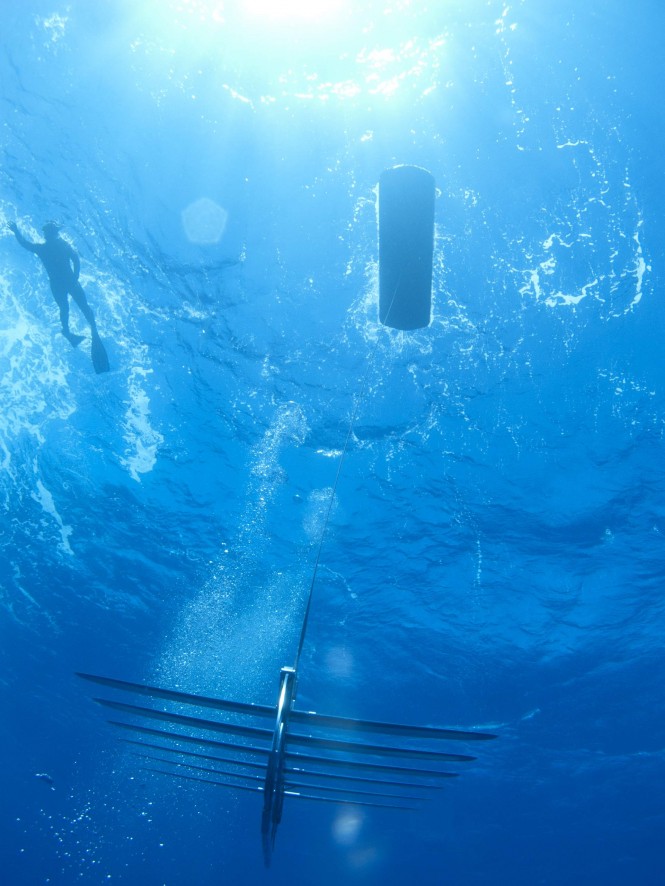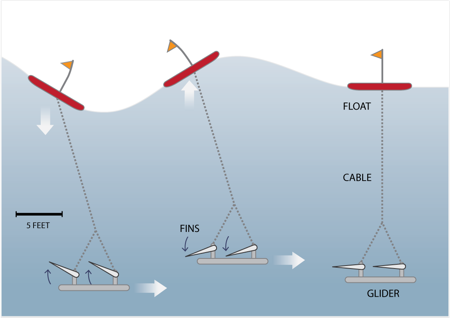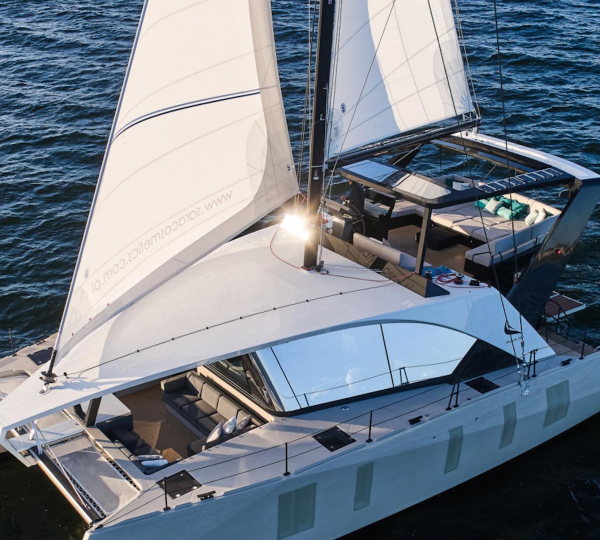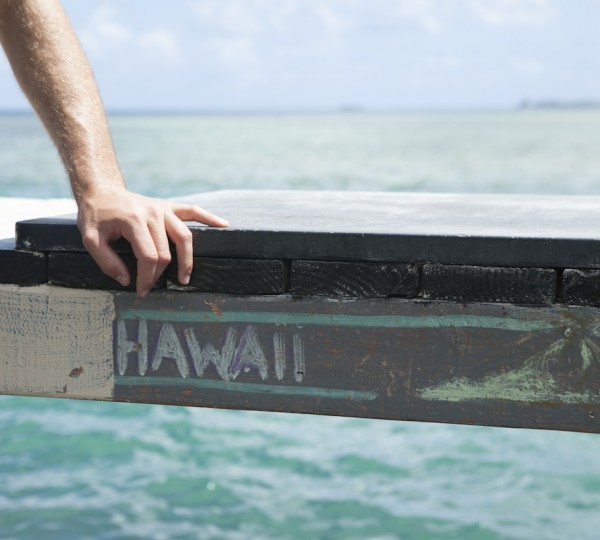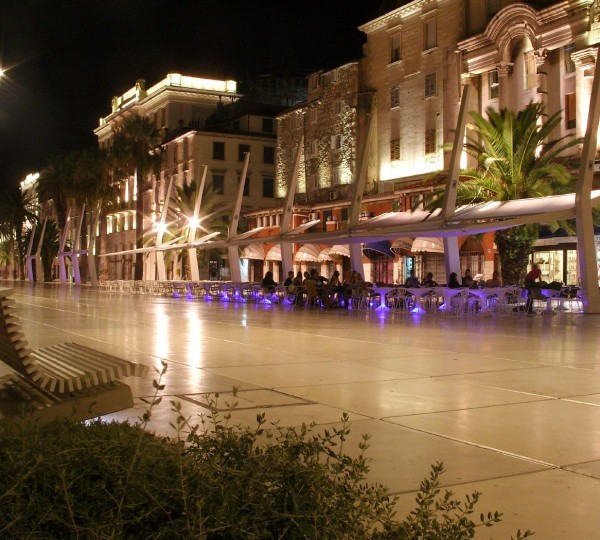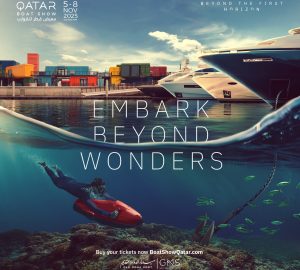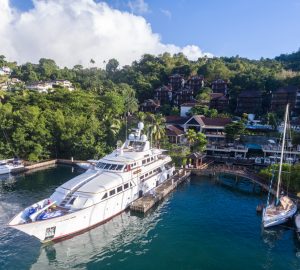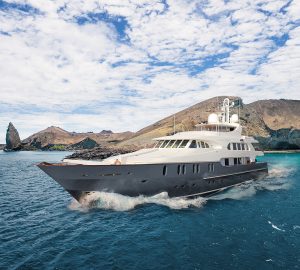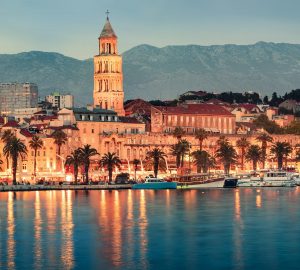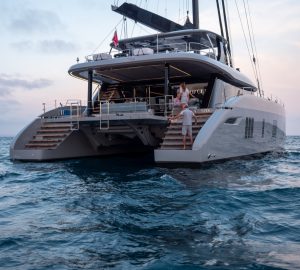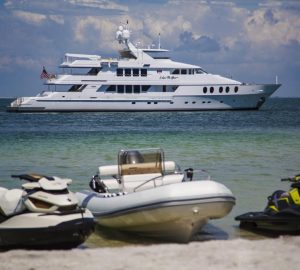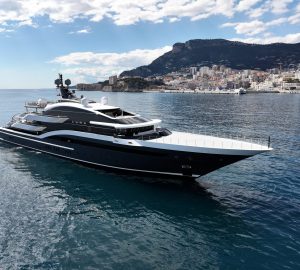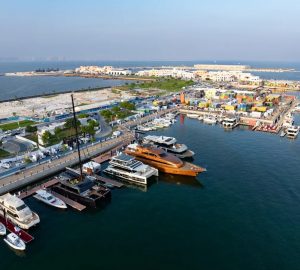Virgin Oceanic and Ocean in Google Earth Join to Promote Innovative Scientific and Commercial Applications for Ocean Science…to foster new scientific discoveries in ocean science.
At San Francisco’s St. Francis Yacht Club, Liquid Robotics(R), an ocean data services provider and developer of the first wave-powered Wave Glider(R) ocean robot, launched four Liquid Robotics’ Wave Glider ocean robots on a record-setting journey across the Pacific Ocean — the longest distance ever attempted by an unmanned ocean vehicle. The purpose of this unprecedented PacX (Pacific crossing) voyage is to foster new scientific discoveries in ocean science by making available vast amounts of ocean data collected and transmitted globally during the Wave Gliders’ yearlong journey. Liquid Robotics and Ocean in Google Earth are providing a platform for the world to follow the expedition virtually, while Virgin Oceanic and Liquid Robotics will jointly explore the Mariana Trench.
The Wave Gliders are expected to collect approximately 2.25 million discrete data points, and take more than 300 days to complete their voyage. During their voyage, they will transmit valuable ocean data on salinity, water temperature, waves, weather, fluorescence, and dissolved oxygen. When they reach their final destinations, the Wave Gliders will have earned a Guinness World Record for the longest voyage completed by an unmanned ocean vessel.
“Imagine the possible applications and discoveries this data will enable for the scientific community,” said Bill Vass, CEO of Liquid Robotics. “Liquid Robotics has made this investment in the PacX Challenge to not only demonstrate the endurance of Wave Gliders, but more importantly, to ignite everyone’s imagination on what can be discovered and explored when the ocean is networked with sensors. I encourage everyone who has a passion for the ocean to participate in our journey.”
During their 33,000 nautical mile journey, the Wave Gliders will travel across some of the world’s most challenging environments. Four Wave Gliders will begin their journey together to Hawaii, and then split into two pairs, one pair continuing to Japan (over the Mariana Trench, where Virgin Oceanic will complete the first of its Five Deep Dives) and the other pair to Australia.
“At Virgin Oceanic, our mission is taking the next step in human exploration to the last frontier — the very bottom of our seas,” said Chris Welsh, Virgin Oceanic co-founder and pilot. “I will be piloting to the bottom of the Mariana Trench to explore the deepest point of the Pacific Ocean. Wave Gliders are one of the most promising solutions for major, low cost, long-range ocean exploration. I look forward to seeing the results as their Wave Gliders cross over the Mariana Trench, which is our first major dive location. I applaud Liquid Robotics as they launch their Wave Gliders on the PacX grand challenge and join us in exploring our vast oceans.”
Throughout their journey, the Wave Gliders will build an enormous data set, provided free of charge and in real-time, to the world’s scientists, educators, students, and the general public. Liquid Robotics is making this data available to anyone who registers on www.liquidr.com/pacx . Virtually join this mission to bring new oceanic research to the scientific community by visiting the Ocean Showcase on the Google Earth website or access the Wave Glider data via the Liquid Robotics PacX website www.liquidr.com/pacx .
“Most of the ocean remains unexplored with less than 10 percent of it mapped out,” said Jenifer Austin Foulkes, Ocean in Google Earth manager. “This expedition creates an opportunity for students, marine researchers, and aspiring oceanographers to follow these brave Liquid Robotics ocean robots as they cross the Pacific virtually through the Ocean Showcase on the Google Earth website. They can also check back daily in Google Earth to see the latest posts from scientists communicating weather and climate data back from these ‘R2D2s’ of the sea.”
In addition to providing free, unlimited access to this data, Liquid Robotics is inviting scientists, students and educators to compete in the PacX Challenge competition, which will recognize the most innovative application of the ocean data being collected. The winner of the grand prize will get six months of free Wave Glider data services with custom configuration and routing. Participants should submit a one page abstract to Liquid Robotics by May 31, 2012. The abstract and submission guidelines may be found on www.liquidr.com/pacx . A distinguished Science Board will select from the candidates and the grand prize award will be made in December 2012.
About Liquid Robotics Liquid Robotics, Inc. is an ocean data services provider and developer of the Wave Glider(R) marine robot that functions as a persistent and versatile platform for scientific and industrial payloads. Based in Silicon Valley and Hawaii, the company’s Wave Glider(R) vehicle is enabling dozens of applications and missions never before attainable. Liquid Robotics is backed by Vantage Point Capital Partners.
More About Wave Gliders:
By continuously harvesting energy from the environment, Wave Gliders are able to travel long distances, hold station, and monitor vast areas without ever needing to refuel. A unique two-part architecture and wing system directly converts wave motion into thrust, and solar panels provide electricity for sensor payloads. This means that Wave Gliders can travel to a distant area, collect data, and return for maintenance without ever requiring a ship to leave port.
The Wave Glider is a configurable platform designed to support a wide variety of sensor payloads. It can keep station or travel from point to point. Data is transmitted to shore via satellite, and the continuous surface presence means that data can be delivered as it is collected. Payloads can be installed by customers or integrated by Liquid Robotics.

